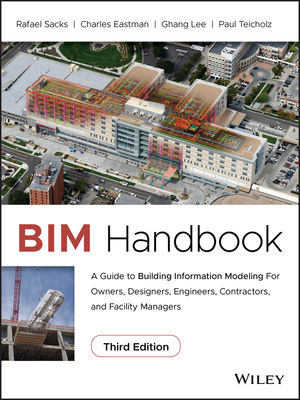A Classic Case Of Good Intentions
When delays are alleged in a construction dispute, those charged with resolving the dispute must look for the most credible way to identify and quantify the delays. As an industry, little has been done to formally define appropriate schedule analysis methodology. However, that is changing.

MANGINELLI
In 2007, the Association for the Advancement of Cost Engineers International (AACEI) attempted to change the landscape with the publication of its Recommended Practice No. 29R-03, Forensic Schedule Analysis (FSA). While the FSA’s intent may have been noble, it has caused quite a stir among schedule analysts and the attorneys and clients who hire them.
Why all the fuss? The FSA’s stated purpose is “to provide a unifying technical reference for the forensic application of [the] critical path method (CPM) of scheduling.” This is a laudable goal. As schedule analysts often act as expert witnesses in legal proceedings, who wouldn’t agree that these practitioners should come together to define the proper approach to the analysis of delay?
Unfortunately, the FSA falls short of this challenging goal. Perhaps a better question for the industry is whether the goal of a uniform protocol is attainable. While it is true that the courts have helped guide delay experts, the current state of the practice is so undisciplined that it will take the coordinated effort of many willing participants to create something approaching “unity.”
One example of the industry’s lack of agreement concerns the basic terminology used to describe analysis methods.
The FSA uses its own unique taxonomy to describe eight methods of forensic schedule analysis. To highlight the gap between the industry’s terminology and the FSA’s taxonomy, note that five of the methods in the FSA list “windows analysis” as a common name. In this case, the FSA’s disciplined terminology describes five distinctly different methods, while the industry terminology loosely assigns the same name to all five. I don’t fault the FSA for trying to bring clarity to the terminology, but its attempt to redefine it may prove to be a huge challenge. Despite the fact that the FSA has been out in the industry for three years, I hear very little acknowledgement of this “new” terminology.
One concern with the FSA is that it gives equal credibility to the eight methods it describes. For example, the “modeled/subtractive/single simulation” method (MIP 3.8) describes a method known in the industry as the “collapsed as-built.” In this method, the analyst begins with a network that models the project as it was built and then removes selected “delays” to demonstrate their impact. This method has been discredited for several reasons, such as its disregard for the original and updated plan and its reliance on logic created after the fact. Yet, the FSA makes no distinction in terms of credibility and reliability between the collapsed as-built and a contemporaneous schedule analysis that uses the project schedules to identify critical path delays objectively.
Another concern is that the FSA characterizes the “modeled/additive/multiple base” method (MIP 3.7), also known as “time impact analysis,” as being a retrospective analysis method. The FSA defines “retrospective” as an analysis “performed after the delay event has occurred and the impacts are known.” Yet, in the AACEI’s Recommended Practice No. 52R-06, “Time Impact Analysis—As Applied in Construction,” this same method is properly described as a “forward-looking, prospective analysis technique,” stating expressly that it is not recommended for retrospective analysis.
Are these and other flaws enough to deem the FSA a failure? Not yet! AACEI currently is revising the document, and a draft will be available for industry comment in the near future. Time will tell if the current document’s flaws will be overcome.
For those who see the importance of establishing standards for forensic schedule analysis, the FSA will be their chance to have input. Perhaps the success of this document will demand persistent revision for some time. Regardless, this train has left the station. My advice to anyone who dislikes the FSA is to climb aboard and help guide the effort.
Critical Path Analysis is fundamentally false.<br/><br/>It is not true that given a choice of activities choosing the one<br/>that takes the longest time guarantees the shortest schedul...
It is not true that given a choice of activities choosing the one
that takes the longest time guarantees the shortest schedule time.
Over 50 years ago Ronald Graham of Bell Labs tried to shorten schedules.
He tried to use CPM and found the job took longer. Upon investigation
he found the method to be mathematically invalid.
Anonymous:<br/><br/>You're assessment of Mr. Graham's conclusions are false. What Graham stated was, "Critical path scheduling gives a rational and, in practice, useful for method for ...
You're assessment of Mr. Graham's conclusions are false. What Graham stated was, "Critical path scheduling gives a rational and, in practice, useful for method for constructing schedules. We did find, however, that it is possible for a CP schedule to be very bad." Graham went on to provide examples where using a CPM schedule would not be the optimal way to schedule a project. Some of the examples Graham provided were activities that are assigned on a random basis and/or lack predecessor tasks. Graham's point is a valid point, especially considering CPM scheduling is based on a network of activities (meaning that activities will have predecessor and successor tasks). It makes sense that schedules which contain an abundance of activities assigned at random may are not ideally modeled using CPM scheduling practices.
I suggest you, or anyone else that believes your statement, read Graham's opinions again and read them carefully. The link to my source is provided below. Best of luck, Sir.
http://www.math.ucsd.edu/~sbutler/ron/78_15_combinatorial_scheduling.pdf
It is ironic that the link supplied to support the use of CPM tells<br/>of the stunning failure of CPM when applied to computer programs<br/>for anti ballistic missle systems. <br/><br/...
of the stunning failure of CPM when applied to computer programs
for anti ballistic missle systems.
Here the computer systems ran slower with more computer
power harnessed in a CPM configuration. That the system ran
slower while consuming more resources is no endorsement
of CPM.
Years ago CPM enjoyed some popularity it was believed
to be associated with successful projects must notability perhaps
Polaris.
As Professor Sapolsky has shown in his "The Polaris System Development:
Bureaucratic and Programmatic Success in Government" , The purported
use of CPM, not actually used, was found very useful by bureaucrats
because it kept officialdom out of the hair of the engineers who could then
do their engineering in relative peace. This is what made the Polaris program
a success.
The way it worked was this : the most dispensable engineers would be assigned CPM
duties they would produce produce impressive CPM charts with impressive computers
and in those days of the slide rule computers had cachet !
Officialdom would see all this assume everything is going swell. In addition to keeping
Officialdom out of the engineers hair, when the managers needed extra resources they
got it with little bureaucratic fuss. Why not everyone could see that those reel to reel
computers spinning out CPM schedules - why the project just had to be moving
swimmingly.
Thus Ronald Graham like others brought the myth. CPM was a success a public
relations success.
CPM lacks a body of case studies, lacks a body of empirical research and relies
almost exclusively on unsupported testimonials.
A more recent review of CPM and other techniques is the paper by<br/>Lionel Galway of the RAND corporation who writes :<br/><br/><br/>"the striking lack in the textbooks is that there i...
Lionel Galway of the RAND corporation who writes :
"the striking lack in the textbooks is that there is little literature cited
in the USE (emphasis in original) of the techniques. That is, there are
no pointers to a critical literature about the techniques such as when
they are useful,or if there are any projects or project characteristics
that would make it difficult to apply these methods. There are also
few or no sets of case studies that would illustrate when the methods
worked or failed"
The quote is from Quantitative Risk Analysis for Project Management
a Critical Review and is available on the web.
One thing is true about CPM, that is that its name is false.
CPM does not give the critical path thru a network.
Therefore I suggest that CPM just be replaced by a different
descriptor "A Scheduling System " whose acronym is equally
memorable as CPM and moreover in its modesty is true.




